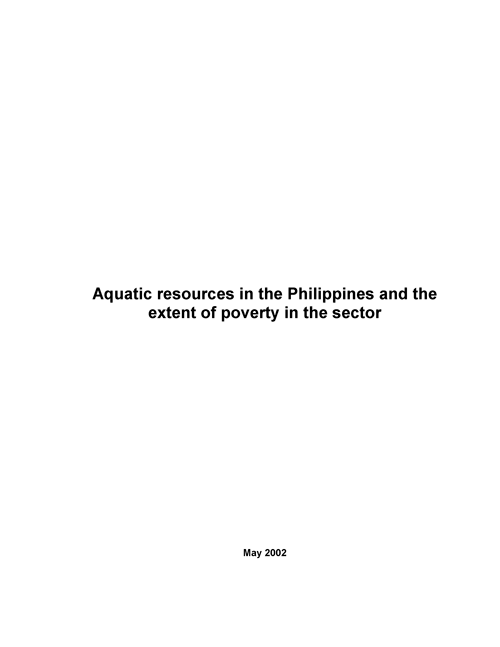Aquatic resources in the Philippines and the extent of poverty in the sector
30 January 2004 | Rebecca Rivera-Guieb, Daisy Turcotte, Body-Hagart Alexander, Jocel Pangilinan and Ronet Santos | 1908 Downloads | .pdf | 6.3 MB | Food Security, Safety and Certification, Freshwater finfish, Gender, Governance and Policy, Livelihoods, gender and social issues, Aquatic plants, Marine finfish, Markets and trade, Philippines
This report presents an overview of the state of aquatic resources in the Philippines, its performance and importance in the Philippine economy, and explores the situation of poverty in the "aquatic resources sector." The report describes the policy environment that guides the action of key actors in the sector.
The report also provides a general analysis of some trends in relation to factors that keep the poor from participating and benefiting from aquatic resource management, based on the perspectives of the authors. The general analysis should be considered "a first go" by the authors at pointing readers to potential entry points for programme intervention on poverty-focused programmes in the aquatic resources sector. The report describes initiatives that have been carried out in the past and gives a general assessment of where poverty focused work may still be needed.
The report is based on a synthesis of publicly available secondary information that we were able to gather within a three-week period, from the first week to the last week of April 2002. The report was written with two principal users in mind - the STREAM initiative who are interested in regional sharing of learning on poverty-focused programmes in the sector across Southeast Asia and the VSO programme in the Philippines who are reviewing their country strategic plan and is therefore interested to know where and what type of poverty-focused intervention in the sector is needed and possible.
The report gives readers general answers to where and what questions above. It does not claim, however, to be comprehensive and much work remains to be done to make the analysis in the report more area and context specific. As much as possible, we have provided "links" to possible sources of more detailed information for readers who are interested to do more research in specific aspects of this report.
The report is divided into seven (7) sections:
- Status of aquatic resources in the Philippines.
- Fisheries and the Philippine economy.
- Fisheries sector production.
- Persons involved in the aquatic resource sector.
- Description of fishery policies.
- Poverty situation in the sector.
- Analysis and recommendations
Creative Commons Attribution.

